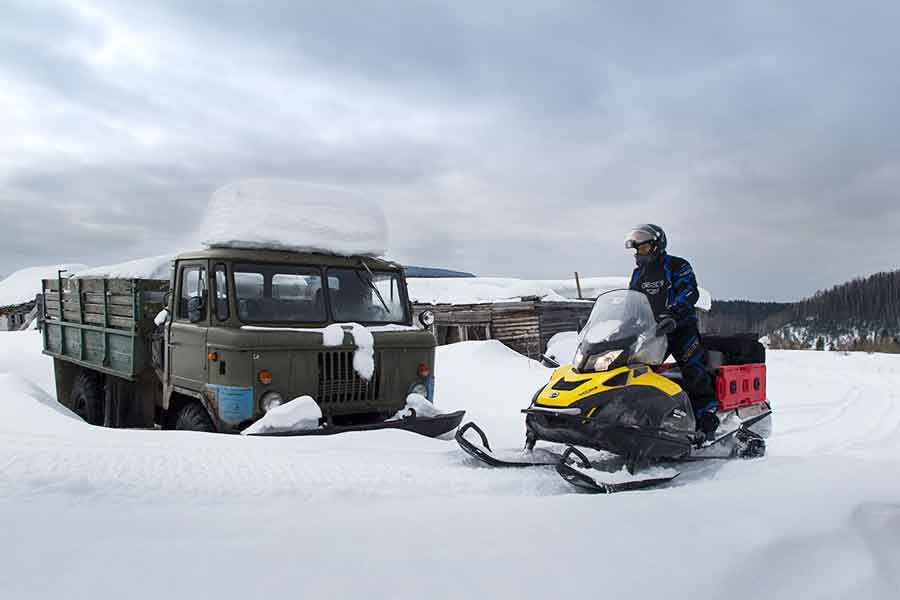Introduction
Winter in Russia, with its vast landscapes draped in pristine snow, beckons adventurers seeking to immerse themselves in nature’s beauty. However, amid this serene environment, dangers often lurk, turning moments of excitement into tragedies. One such tragic event was the january 2008 snowmobile accident russia, which not only claimed lives but also raised serious concerns about the safety of winter sports. This article delves into the events of that fateful day, exploring the causes of the accident, the lessons learned, and the precautions that must be taken to prevent future mishaps.
The Incident: A Tragic Loss of Life
In January 2008, a devastating snowmobile accident occurred during a popular winter sporting event in Russia. The event, meant to celebrate the thrill of riding snowmobiles amidst Russia’s stunning winter scenery, quickly turned deadly. Multiple snowmobiles crashed, resulting in significant loss of life and leaving several communities in mourning.
The accident took place in a region known for its unpredictable weather, a factor that contributed to the tragedy. Many participants, including women and children, were ill-prepared for the challenging conditions. As at least four snowmobiles collided in a remote, scenic area, the response from emergency services was hampered by rough terrain and severe weather, delaying rescue efforts. By the time search and rescue teams arrived, most of the victims had already succumbed to the harsh conditions.
The emotional toll on the victims’ families was profound, raising urgent questions about the safety of winter excursions and the need for stricter safety protocols.
Causes and Contributing Factors
The january 2008 snowmobile accident russia was the result of several interrelated factors. Chief among these were weather conditions, which created a dangerous environment for riders. Heavy snowfall and poor visibility during winter storms made navigation difficult and dangerous, leading to incorrect decisions and accidents.
Operator error also played a significant role. Inexperienced or careless snowmobile operators may have failed to account for the icy patches, steep slopes, and tight turns that characterize winter terrains. Without proper training or experience, these conditions can quickly become deadly.
Mechanical failures further compounded the dangers. Malfunctioning snowmobiles can leave riders unable to control their vehicles, leading to crashes and, in some cases, fatal consequences.
Finally, insufficient safety education was a major contributor. Many participants lacked the necessary knowledge and training to navigate such challenging conditions safely. This accident underscored the importance of comprehensive safety training, especially for those new to winter sports.
Lessons Learned
The tragic events of January 2008 serve as a stark reminder of the dangers associated with winter sports. One key lesson is the importance of proper training. Snowmobile operators must undergo rigorous instruction to ensure they are capable of handling the challenges posed by winter environments.
The environment itself also plays a crucial role in safety. Snowmobiles are affected by varying terrains and ever-changing weather conditions, making it essential for participants to be well-versed in navigating different surfaces.
Group dynamics should also be considered. Before setting out, participants should establish clear communication plans and set expectations for safety. Staying connected throughout the outing can prevent accidents and ensure help is available if needed.
Every incident provides valuable lessons that can be used to improve safety practices, ensuring future participants can enjoy winter sports without the same level of risk.
Safety Measures for Winter Recreation
Engaging in winter sports can be thrilling, but it requires a commitment to safety. The right equipment is critical; participants should wear thermal clothing and a high-quality helmet to protect against both the cold and potential accidents.
Before embarking on an adventure, it’s essential to understand the terrain and weather conditions. Checking the weather forecast and the condition of the riding surface can significantly reduce the likelihood of accidents.
Traveling in groups is highly recommended. Having companions nearby ensures that help is available if something goes wrong. Additionally, communication devices such as walkie-talkies or mobile phones are vital in case of emergencies.
Finally, riders should undergo adequate training and practice before attempting more difficult routes or maneuvers. Familiarity with one’s equipment and surroundings can greatly enhance the safety of winter sports.
Similar Incidents and Their Impact on Safety Regulations
Snowmobile accidents are not isolated incidents, and similar tragedies have occurred worldwide. These accidents have sparked important discussions about the need for improved safety measures in snow sports. Inquiries into these incidents have led to recommendations for enhanced training programs and stricter licensing requirements for snowmobilers.
Furthermore, authorities have recognized the need for better maintenance protocols and the use of mandatory safety equipment. Legislation around the design and upkeep of snowmobiles has been reviewed and improved to ensure safer participation in winter activities.
Campaigns promoting responsible rider behavior have also been launched, with the goal of educating the public and preventing future accidents. These initiatives emphasize the importance of following safety rules and being aware of one’s surroundings during outdoor winter activities.
Conclusion: The Vital Importance of Precaution in Winter Sports
The january 2008 snowmobile accident russia serves as a somber reminder of the inherent dangers of winter sports. While activities like snowmobiling offer excitement and adventure, they also require careful planning and adherence to safety measures.
Understanding the weather, maintaining equipment, wearing appropriate gear, and receiving proper training are all critical steps in preventing accidents. As a society, we must learn from past tragedies to ensure that future participants can enjoy winter sports safely.
